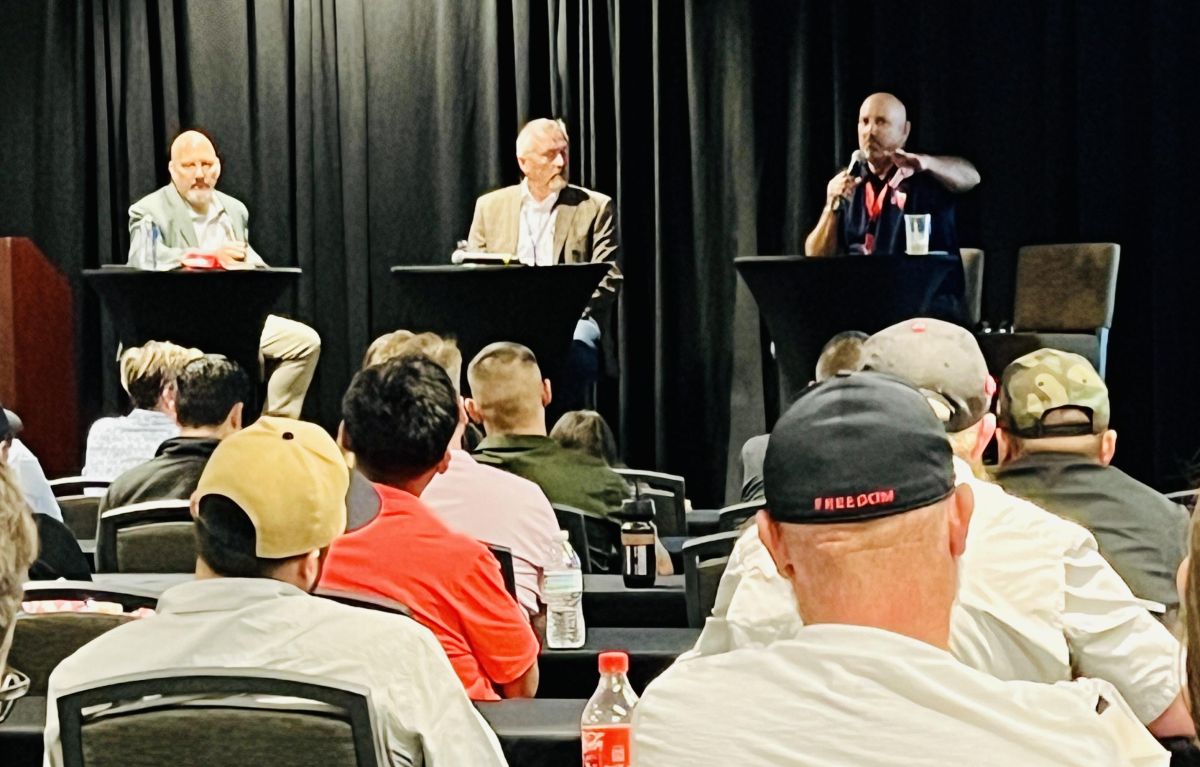In a packed conference room July 13 at the Irving Convention Center, the Texas Auto Body Trade Show hosted a highly anticipated panel discussion titled “Culture Club.” Moderated by Mike Anderson of Collision Advice, the panel featured Tony Adams, a consultant for AkzoNobel, and Burl Richards, president of the Auto Body Association of Texas (ABAT), which hosted the event, and owner of Burl’s Collision Center in Henderson, TX. The panel looked into the importance of company culture in attracting and retaining top talent.
Exploring the Essence of Culture
The panel began with a joint assertion: “Culture is everything.” From the quality of service provided to how employees are treated, a positive workplace culture permeates all aspects of a business.
Anderson emphasized that culture is about whether employees enjoy coming to work every day. He likened it to a sports team, asking, “Do they want to wear the jersey, and are they proud of where they work?”
Anderson referenced Dr. Gary Chapman’s book, “The 5 Love Languages,” and its companion, “The 5 Languages of Appreciation in the Workplace,” highlighting the importance of showing appreciation. For some, appreciation might mean an extra day off to spend with their children; for others, it could be bonuses earmarked for family vacations. Adams stressed the need for leaders to invest time in understanding their employees’ preferences and showing genuine care.
Richards shared his open-door policy, encouraging employees to call, text or visit him with any concerns. He asserted the No. 1 priority is communication: “You feel the vibe in the shop if you have good communication. We’re in this together.”
Shifting Dynamics
Adams spoke about the significant changes in workforce dynamics and the need for leaders to adapt. He noted traditional approaches to employee engagement and retention, which might have worked 15 years ago, are no longer practical.
“As leaders of our organizations, we must adjust our thought processes around what workers are looking for today,” Adams said.
He emphasized the growing importance of the Employee Satisfaction Index (ESI) alongside the Customer Service Index (CSI), citing Danny Myers’ assertion that issues with CSI often stem from problems with ESI.
Creative Ways to Retain Employees
The panelists shared several creative strategies for employee retention. Anderson provided examples from dealerships that offer increasing bonuses over the years, maxing out at $10,000. He spoke of one of his clients rewarding employees with unique perks like house cleaning services to make their lives easier. Some shops provide paid time off with, in addition to the employees’ regular pay, an annual “paid vacation" with an extra $4,000 allowance, ensuring employees can genuinely enjoy their time off.
Another critical point was investing in employees’ personal development. This could include financial management assistance, creating memorable moments, and contributing to significant milestones like home purchases. One shop owner offers a $5,000 mortgage bonus towards purchasing an employee’s first home. The Society of Collision Repair Specialists (SCRS) also provides comprehensive insurance benefits and 401k.
Understanding employees’ needs through surveys and flexible work arrangements were highlighted as crucial elements of a positive workplace culture. While four-day workweeks are gaining popularity, some employees may prefer the traditional five-day schedule. Offering diverse benefits, such as dental and vision plans, increases employee satisfaction significantly.
Adams advocated for more frequent performance reviews, suggesting a shift from annual to quarterly. Instead of waiting an entire year to get feedback, reviews occur more frequently, allowing employees more opportunities to change their behavior and actions to achieve their goals.
What is Your Company Brand?
The panel concluded with a discussion on the broader impact of workplace culture. A successful business is built on the foundation of its employees, and a company’s culture is reflected in its brand. An audience member challenged attendees with the question, “What is the brand the world wants to see based on values, beliefs/behaviors and actions?”
The "Culture Club" discussion concluded that through appreciation, communication, innovative retention strategies, flexibility and frequent engagement, businesses can create environments where employees are proud, satisfied and motivated. A strong workplace culture is not just a benefit for employees -- it is a cornerstone of a successful and sustainable business.

















Leona Scott